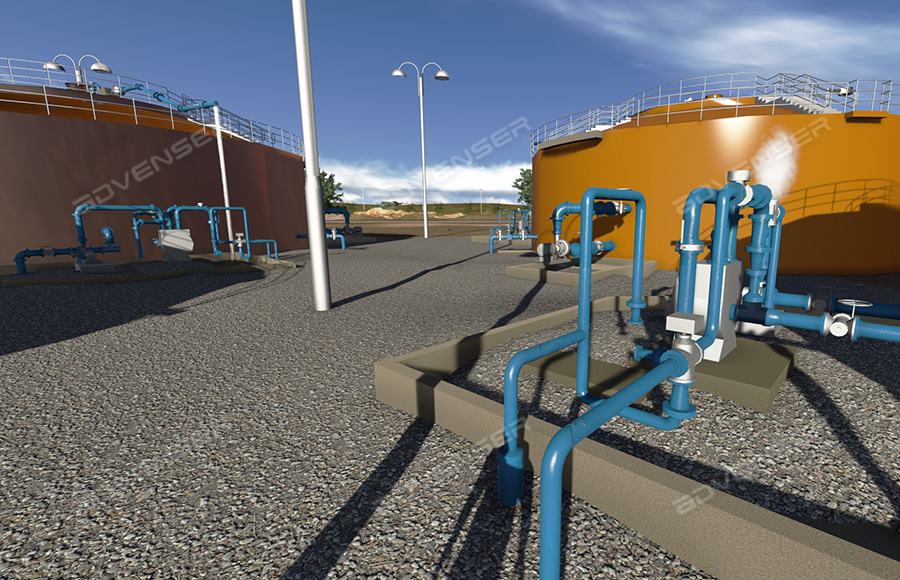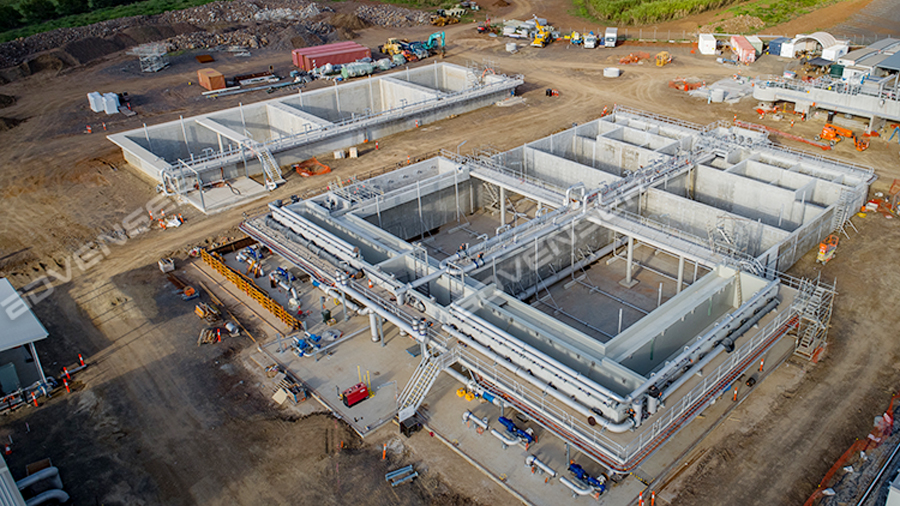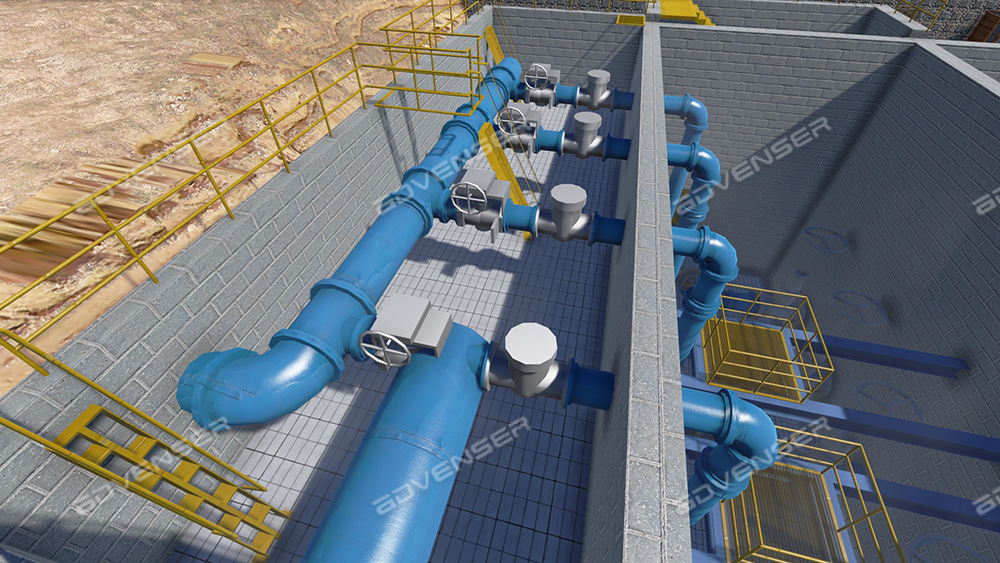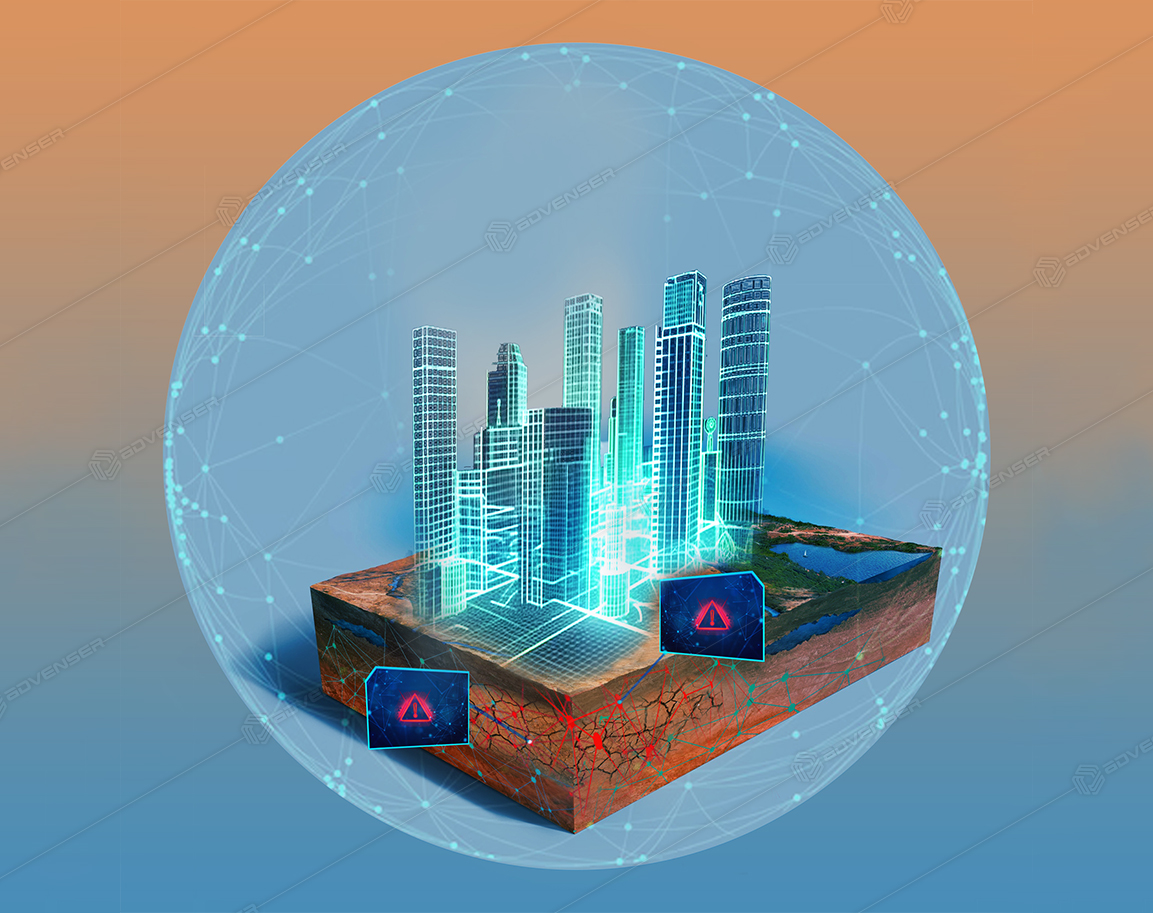“The wars of the twenty-first century will be fought over water”– growing demands of the global population and increasing problems caused by urban water pollution point out that, the world needs to focus on building pristine and sustainable water treatment plants that can provide for our future generations. It is estimated that roughly 80 percent of wastewater worldwide comes back into the ecosystem untreated or reused, which means,around 1.8 billion people are using contaminated sources for drinking water.
Designing and building elaborate water treatment systems is no child’s play. Water treatment is a stage-by-stage process, and in each step water is treated a step further. Each of these stages is equally important, and there are precise calculations behind the design of each and every dimension involved.
To put simply, it comprises of four stages:
(i) Primary treatment which consists of screening, grit removal and sedimentation
(ii) A bioreactor, which is the second stage of treatment
(iii) Tertiary treatment which involves nitrogen removal, adsorption
(iv) pH control
Hence, water treatment plant is like a ‘living ecosystem’ with its stages of treatment.
Why design and build of Water Treatment Plants is complicated?
Firstly, there are many intricate design elements to be considered while designing water treatment plants. For instance, the raw sewage pumps in waste water systems should be designed in such a way that the extent of piping is minimum and at the same time it offers enough passage for solid substances. The aeration tank in waste water treatment plants consists of multiple internal pipes, known as the diffusers. These diffusers decide the aeration levels in the tank, for example; if one diffuser delivers 10 m3 per hour and if there are 30 diffusers in the aeration tank, then the aeration capacity of the tank will be 30 x 10 = 300 m3 per hour.
Secondly, the drinking water treatment/waste water treatment/desalination plant should always be designed, by anticipating the operation and maintenance activities that need to be carried out by the facility management team in future. The media in the plant filters (be it the carbon filters or the sand filters) need to be changed periodically. What complicates it further, is the inevitable fact that maintenance workers may be required to go into the tank to clean them. So proper clearances and adequate space should be given to ensure safe operational activities. Thirdly, ventilation systems are most vital for smooth running of the water treatment plant. For example, there might be strong odours prevailing above the aeration tank. Exhaust and fresh air systems need to installed to ensure proper air circulation in the constricted areas of the plant. Finally, managing long electrical lines are inevitable as there are a considerable number of pumps involved in treatment plants. Electrical layout drawings should be done in such a way that there is minimal cost – so the length of the cable should be laid out in an optimum way.
The traditional design, planning and construction strategies do not come close to meeting the needs of highly complex water treatment systems. Advancement in technology in the last decade has contributed to simplifying the construction of complex water treatment plants designed to support large-scale facilities and industrial structures.
Conventional design and pre-construction planning based on 2D CAD drawings of water treatment plants, forces designers and architects to illustrate 3D concepts through the 2D drawings. The construction crew is forced to interpret and envision a 3 dimensional entity using only 2D drawings and then begin construction based on that understanding. This explains poor visualization and ineffective communication, which often occur in a conventional project approach. Design and construction methods utilizing Building Information Modeling (BIM) and Virtual Design and Construction (VDC) coupled with usage of advanced software tools have proved to be a game-changer in this regard.
Key Applications of BIM for Water Treatment Plants
1. Parametrization
Parametrization is the creation of digital models using pre-programmed rules known as ‘parameters. ‘Once the parameters are pre-defined, elements of the same type can be generated automatically by internal logical arguments rather than manually creating duplicates. It gives a more comprehensive information database by storing all the parameters of a component. That is in essence, parametrization. Moreover, each parameter of a given component has a logical relationship with every other parameter, and it will reflect on the model accordingly as you modify it. Water treatment plants commonly consist of repetitive components, and parameterization saves a lot of time spent in creating and embedding individual drawings of each pipe, flange and valve into the object.
2. Visualization
As the term suggests, this feature helps you to visualize your project way before construction begins. 3D BIM modelling provides architects and designers with comprehensive and valuable design insights, which are otherwise impossible to achieve using just 2D CAD drawings or Piping & Instrumentation diagrams (P&ID). Designers can identify potential problems right from the conceptual stage and make necessary corrections in the design. Rather than simply relying on CAD drawings of water treatment equipment or facility, these special shaped structures can be easily modelled in Revit. BIM enables early resolution of clashes between multiple engineering systems and hence simplifies the coordination process.
3. Collaboration
Another key feature of BIM that makes it an obvious choice is the fact that, BIM is more of a data exchange platform rather than just a simple model. All decision makers of the project such as the government authorities, architects, designers and contractors can work on the model simultaneously to incorporate live inputs. This tremendously improves communication and data exchange amongst the parties.
4. Simulation
BIM enables simulation of a building in forwarded time under certain conditions. BIM models thus created, can be refined to achieve various objectives such as energy saving, emergency evacuation, 4D schedules creation. “BIM sounds great, but what does the ground reality say?” is a question worth pondering in this context.
Current Scenario of BIM use in the Water industry
The main stakeholders in water treatment plant BIM projects are usually three parties
i) The Owner of the company
ii) Project Engineers, Technical Leads, BIM Managers etc.
iii) Draftsmen / Modelers / QC
Each of them contributes to the BIM implementation process in a unique way. From the owner’s perspective, top water company managements aspire to make a complete transition to BIM from CAD. Having an in-house BIM team means you can have complete control over your project. Project owners are looking to recruit engineers with strong technical know-how to take up leading roles and spearhead the BIM implementation process within their organisation.
Another aspect these companies need to put effort in is the setting up of BIM standards. Since a large number of organizations may be involved, it could very well end up in complete chaos, if guidelines are not defined and established properly from the very beginning. BIM standards,
a) improve the quality of information shared between parties
b) increase the efficiency of various intrinsic processes
c) enables better coordination
d) offer greater awareness and insights into the planning and execution cycles.
Diverse technical teams involved in the BIM planning and implementation processes may have a slightly different set of priorities. To them, there may be nothing more important than the quality of design drawings and models. BIM managers cannot do without resources having in-depth industry knowledge and proficiency in 3D tools such as Revit, Inventor and Tekla. Large water treatment facilities involve a large number of structural, electrical and mechanical components. Developing custom families makes it easier to model a “family” or “library” of similar components. Their utilisation extends even towards the operation and maintenance stages of the project. 3D families or ‘BIM objects’ are embedded with technical datasheets, product literature and other standard details which can be easily retrieved at any point of time.
The reason for the rising popularity of BIM is, its ability to work collaboratively which is why seasoned BIM managers do not hesitate to invest heavily in collaboration software such as Autodesk BIM 360 and BIM Track. These provide a 3D cloud environment for contractors, designers and detailers to exchange information and work simultaneously on the same project. BIM engineers emphasize on customising the software to make the repetitive tasks shorter, thereby deriving more return from their investment. In order to accomplish this, BIM managers experiment in visual programming tools such as Dynamo and Grasshopper.
Designers, Engineers, and 3D Modelers play a key role in the BIM adoption process of any project. The role of draftsmen cannot be discounted either, as after all, they are responsible for the accuracy of drawings. Clarity of thoughts, effective communication, and timely escalation of issues are aspects that cannot be comprised or negotiated in industrial treatment plant projects.
What’s next for Water Treatment Plant BIM?
Like every other application of technology, the question on future of design and construction of treatment plant projects cannot be addressed without the mention of Virtual Reality. Imagine standing amidst a row of giant pipes and tanks during your design related decision making processes! It really beats the option of viewing them on screen as 3D models! doesn’t it? VR elevates the design and planning processes to a higher level by allowing realistic and interactive visual representations. Project owners will get to see the final look of the project and compare design options in the conceptual and preconstruction stages. Facility managers can partake too, by giving proactive feedback for design considerations, as they are the ones who would end up actually using the system. Virtual Reality is often utilised to train the facility management personnel of the WTP plant. It helps the staff to get a sense of their facility, the clearances available at different spaces, the position of equipment and how to access them. This empowers them to offer valuable insights from an operational point of view based on which the designers can make amendments to facilitate the easy operation of the plant. The value of applying VR into improving safety features of the WTP is priceless. A constricted space with smelly gases flowing around is not a nice ‘workplace’ to be in. So planning of safety features like spacing, ventilation, electrical hazards, etc. with Virtual Reality could be a life-saver. The possibilities offered by Virtual Reality in the design and construction of Water Treatment Plants is one of the many wonders offered by modern technology. It is certain that experienced Project Managers and Owners do not see BIM merely as an option, but a necessity for executing complex water infrastructure projects with critical time constraints.












